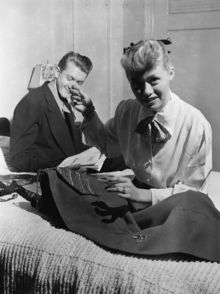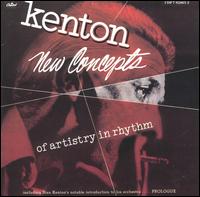
New Concepts of Artistry in Rhythm is an album by Stan Kenton. "Invention for Guitar and Trumpet" features guitarist Sal Salvador. A New York Times writer commented in 2003 that composer Bill Russo's "Improvisation" piece was "among the highest achievements in orchestral jazz".

Something Cool is a studio album recorded by June Christy in 1953, 1954, and 1955, and featuring Christy singing 11 jazz songs backed by the orchestra of Pete Rugolo, and her saxophonist husband, Bob Cooper. First issued in 1954 as a 10" mono LP, an expanded 12" mono LP was released the following year, with four newly recorded selections added to the track listing. In 1960, Christy and Rugolo re-recorded all 11 selections in stereo, so that a stereo version of Something Cool could be issued. For many years, this re-recorded version of the LP was the only one commercially available.
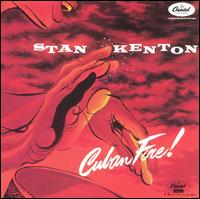
Cuban Fire! is an album by Stan Kenton and his orchestra released in 1956 by Capitol Records. This was Stan Kenton's big band's first full-length recording of Afro-Cuban-styled music. The LP charted for four weeks in Billboard starting on September 15, 1956, peaking at #17. The concept of the original 1956 recording centers on the Cuban Fire! suite Kenton had commissioned from composer Johnny Richards. The 1991 CD re-issue is augmented with one extra track from the 1956 sessions and five cuts recorded four years later by the first of Kenton's mellophonium orchestras.
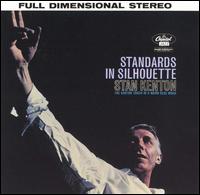
Standards in Silhouette is an album recorded in September 1959 by Stan Kenton and his orchestra. The entire set of arrangements for the LP were written by Bill Mathieu. This recording stands alone in approach and style; Kenton himself only plays on "Django" and every standard is done at a slow, ballad tempo with very sparse, effusive writing.

Adventures in Jazz is an album by the Stan Kenton Orchestra, recorded in late 1961 but not released until about a year later in November 1962. The album won a Grammy Award in the category for Best Jazz Performance – Large Group (Instrumental) category in 1963. This would be Kenton's second Grammy honor in as many years with the first being Kenton's West Side Story winning the Best Large Jazz Ensemble Album in 1962. Adventures In Jazz was also nominated for Best Engineered recording for the 1963 Grammys. The 1999 CD re-issue of Adventures In Jazz is augmented with two alternate takes from the original recording sessions and one track from Kenton's release Sophisticated Approach.

Kenton's West Side Story is an album by the Stan Kenton Orchestra recorded in 1961 and released by Capitol Records. It won the Grammy Award in 1962 for Best Jazz Performance – Large Group (Instrumental). The album was recorded in 1961 and released quickly to take advantage of the movie premiere of the musical West Side Story. Kenton won his first Grammy Award and he won again the next year in the same category with Adventures in Jazz. Kenton's West Side Story peaked at No. 16 on the Billboard magazine album chart.
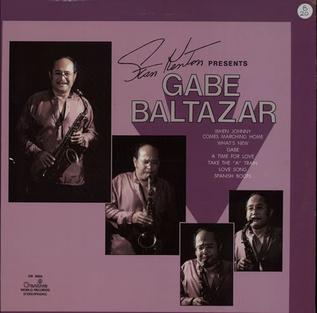
Stan Kenton Presents Gabe Baltazar is an album by Gabe Baltazar. It was the last recording by Stan Kenton's Creative World Records label prior to Kenton's death on August 25, 1979. It was also the last of the "Stan Kenton presents..." series of albums ; this recording presents the talent of the alto saxophonist and former Kenton band member Gabe Baltazar. Though never reissued on CD the recording is critically acclaimed and does a good job highlighting the jazz talents of a legendary jazz artist (Baltazar) at the peak of his playing career. He is backed up by a 17 piece big band on most cuts, a string section is added to one track.
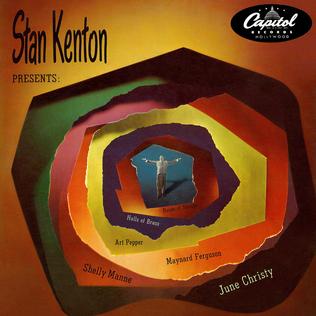
Stan Kenton Presents is an album by pianist and bandleader Stan Kenton with his "Innovations" Orchestra featuring performances recorded in 1950 and originally released as 78 RPM records and a 10-inch LP on Capitol before being reissued in 12-inch LP format in 1955.
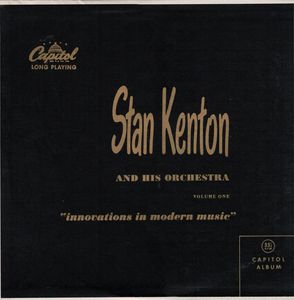
Innovations in Modern Music is an album by pianist and bandleader Stan Kenton with his "Innovations" Orchestra featuring performances recorded in 1950 and originally released on the Capitol label.

This Modern World is an album by pianist and bandleader Stan Kenton featuring performances of compositions by Robert Graettinger recorded between 1951 and 1953 and originally released as a 10-inch LP on Capitol as well as a set of three 7 inch 45 rpm singles.
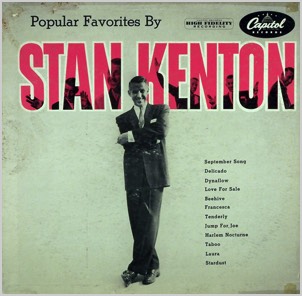
Popular Favorites by Stan Kenton is a compilation album by pianist and bandleader Stan Kenton featuring performances recorded between 1951 and 1953 and originally released as a 10-inch LP and 45 rpm EP on Capitol before being reissued as a 12-inch LP with additional tracks in 1955.

A Presentation of Progressive Jazz is a 1948 jazz album by pianist and bandleader Stan Kenton.

Kenton Showcase refers to two 10-inch LPs by bandleader Stan Kenton recorded in early 1954 on Capitol, one each featuring compositions by Bill Holman and Bill Russo. These albums were combined as a 12-inch LP in 1955.

The Kenton Era is a compilation album by pianist and bandleader Stan Kenton featuring recordings from 1940 to 1954 which was originally released in two limited edition box sets, as fifteen 7 inch 45 rpm discs and four 12 inch LPs, on Capitol in 1955.

The Innovations Orchestra is a compilation album by pianist and bandleader Stan Kenton's "Innovations" Orchestra featuring performances recorded in 1950 and 1951. The CD includes the albums Innovations in Modern Music and Stan Kenton Presents and was released by Capitol in 1997.
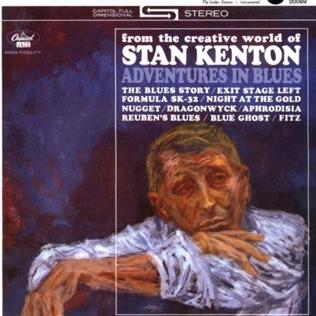
Adventures in Blues is an album by the Stan Kenton Orchestra featuring compositions by Gene Roland recorded in late 1961 and released by Capitol Records in 1963.

Adventures in Time is an album by the Stan Kenton Orchestra featuring compositions by Johnny Richards recorded in 1962 and released by Capitol Records.

Stan Kenton Conducts the Los Angeles Neophonic Orchestra is an album by bandleader Stan Kenton recorded in 1965 by Capitol Records.

The Jazz Compositions of Dee Barton is an album by bandleader Stan Kenton recorded in 1967 by Capitol Records.

National Anthems Of The World is the first studio album by American jazz musician Stan Kenton and his orchestra under the Creative World label, released late 1972. Recording sessions for the album took place at Western Recorders, August 25, 28, 29, 30 & 31, 1972 in Hollywood, California.



